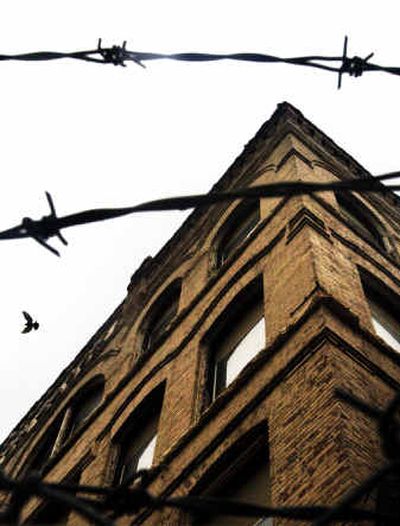Officials vote to restrict razings

The Spokane Plan Commission on Wednesday voted to recommend a proposed ordinance that would put new restrictions on demolition of older buildings in the downtown area and in historic districts in the city.
The vote came as opposition surfaced from members of real estate and property management businesses in Spokane.
Under the proposal, demolition permits for tearing down older buildings in the downtown area and in historic districts would require a plan to replace the building with another building. The proposal is patterned after a law that’s been in effect in Seattle for years, said Teresa Brum, the city-county historic preservation officer.
The goal is to prevent the destruction of historically significant structures such as the 1890 Merton Block building, which was demolished last fall without a project to replace it. The Merton and other downtown buildings were demolished last year to make way for surface parking lots.
The 1934 Rookery and 1915 Mohawk buildings, adjacent to the Merton site, were threatened with demolition as well until a California development firm offered to purchase and redevelop them.
Last year the City Council enacted a moratorium on demolitions without a plan to replace buildings. The proposal under consideration now would replace the moratorium with a permanent law.
Commission members split 4-2 in voting to recommend the proposal to the City Council. The measure is expected to come up for council consideration in the next several weeks. The moratorium expires at the end of March. Public testimony will be taken by the council.
Plan Commissioner Jeff Bierman, who voted against the ordinance, said he supports historic preservation. “I just don’t think it’s appropriate for the city to come along and tell someone what they can do with their property,” he said.
He was joined in voting no by Commissioner Pamela Cloninger, who decried the proposal as an effort by people involved in the historic preservation and restoration business to enhance their monetary gains.
Chairwoman Candace Mumm and Commissioners Marcus Riccelli, Anne Marie Axworthy and Greta Gilman voted in favor of recommending the ordinance.
Mumm said the restrictions can be enforced. “How bold do we want to be on this issue? What does our community want now?” she asked.
“I think this is reasonable,” Mumm said.
John Bennett, who works in commercial real estate and property management, asked commissioners to defer their recommendation so they could take more input from real estate interests, which had not had enough time to review the proposal.
“What is being proposed is a taking (of property rights),” Bennett said. He argued that the ordinance extends beyond designated historic structures to other older buildings that might be considered historic.
Brum said she had briefed several business groups, including real estate organizations, on the proposal prior to Wednesday’s public hearing.
During her testimony, Brum noted that $47 million has been spent in Spokane in the past three years on historic preservation projects.
“That $47 million can translate into good economic development,” she said. Brum also noted that most cities with historic preservation offices have laws similar to the proposal now under consideration.
Jim Kolva, a former Plan Commission member and historic building owner, said he believes the preservation of historic structures has become a foundation for the city’s economic revival. “These are assets that will distinguish Spokane from the shopping mall in the Valley or anywhere else,” he said.
The proposed ordinance provides exceptions for building owners who can show that keeping a building standing creates an economic hardship. A committee with community representatives would rule on hardship exceptions.
The proposal would apply to buildings 50 years old or older in the city’s central business and historic districts.